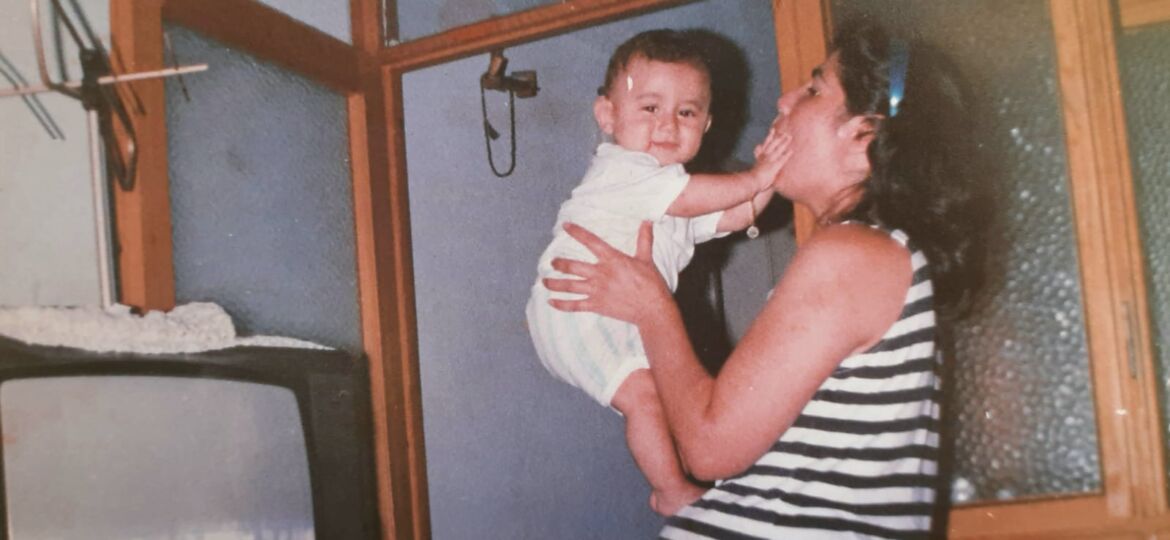
Political uncertainty, cultural liberation, terrorism, television culture, colorful clothing, and pop music… Key words summarizing the 90s in Türkiye for almost everyone. For me, it was a time of childhood, cartoons, and the joy of freedom without the burden of responsibility.
The 90s were both colorful and dark for Türkiye, making it a unique period in its own right. It seemed like a cultural shift reacting unconsciously to the stormy years of the 70s and the monotony of the 80s, striving for unique originality. Such a period that, even in the following 2000s, it continued to be missed and further immortalized. Nevertheless, in this context, the 90s laid the groundwork for Türkiye’s current situation, culturally and politically.
Towards the end of the 80s, a cultural atmosphere of liberation began to prevail in Türkiye. However, this liberation was not solely in the “Western” sense; it manifested itself in many sectors, leading to a growing divide, especially between secular and non-secular extremes. The atmosphere created by the “Post-Modern Coup” of February 28 set the stage for the current state of Türkiye. I encountered the darker side of this period physically for the first time at the age of 7 in 1997 when our lights were turned off for a minute every evening at 21:00 as part of the “One Minute of Darkness for Constant Light” civil disobedience action. It was quite fun for me, and it seemed so for the adults as well.
Despite the darkness of the time, the 90s were equally colorful for Türkiye. Today, we remember the 90s in Türkiye for their vibrancy, cultural originality, and efforts towards diversity. Especially in terms of pop music, the 90s is considered the most iconic period for many of us. The recent resurgence of interest in 90s parties and fashion reflects the biggest impact on our daily lives. Once again, we find ourselves listening to the 90s a lot these days, finding solace in distancing ourselves with nostalgia culture and from the pace of the current era, just like in culture.
Another point is the strong influence of Westernization, born with the Truman Doctrine and shaped by the political dynamics of the 1950s, specifically the Americanization effort, which was intensively felt in the 90s. Music videos shot in America gained popularity during this period. However, the cultural change of the 90s actually brought about a significant level of uniqueness and liberation. In this context, the “On Stage in the 90s” exhibition organized by Salt, which I had the chance to visit four times in Beyoğlu in 2023, reminded me, and probably many others, of the art of the period and the unique spirit blended with this art, encouraging us to smile, think, and try to understand those years with the maturity of today. The curators describe the “On Stage in the 90s” exhibition beautifully:
“The 1990s marked a period of political and economic instability in Turkey; there were eleven coalition governments in ten years, the 1994 currency crisis and the “austerity policies” that followed, as well as an increasing number of unsolved case files and political scandals, which hit the country hard. Even so, the decade’s legacy is not limited to these dark events; the ground for the struggles for rights that would thrive in the 2000s was set in the 90s. Pop culture enjoyed an unprecedented rise with the help of private television and music channels opening one after the other. Election campaigns started to use Turkish pop hits that filled the streets and public squares. After the burden of the 1980 Turkish coup d’état dissipated and with the fall of the Iron Curtain in 1989, Turkey settled on a new line of cultural and economic circulation. Meanwhile, in the backdrop, a period of dynamism that contrasts with this darkness began in Istanbul, where the boundaries of freedom were constantly being expanded in the fields of culture, art, performance and entertainment.”
(https://saltonline.org/en/2455/sergi-sahnede-90lar)

Fig. 1. The 90s Onstage Exhibition Poster.
The exhibition, ranging from events to individual works and based on various sources and archives, brought together elements such as photos, objects, video recordings, sketches, models, letters, posters, and brochures, offering us rich content. This diversity, extending from live performances to video clips, television programs, and content related to football, emphasized the period between 1988 and 1999, but it reached the beginning of the 2000s by transcending the boundaries of time while still drawing inspiration from the 90s.
While tracing the footsteps of increasingly performance-based productions in different spaces, from parks to bars, historical sites to abandoned buildings, the “On Stage in the 90s” exhibition demonstrated how the concept of “stage” could be approached from a wide perspective by establishing unexpected connections. In this context, the exhibition presented excerpts from collective and responsive performances of the period, such as “Serotonin 1” held in Feshane in 1989, “Serotonin 2” in Yedikule Gazhanesi in 1992, and the “Assos Performing Arts Festival” held between 1995 and 1999.
Examining the relationship of performance with society, economy, the street, and politics, “On Stage in the 90s” not only delved into the collective initiatives of artists and designers but also offered a rich experience to viewers by presenting a potpourri drawn from cultural history. The cartoons I watched on our 55-inch tube television, my first Casio watch, Atari, and the Meydan Larousse encyclopedias in our houses… The 90s were a colorful garden covered with darkness.

